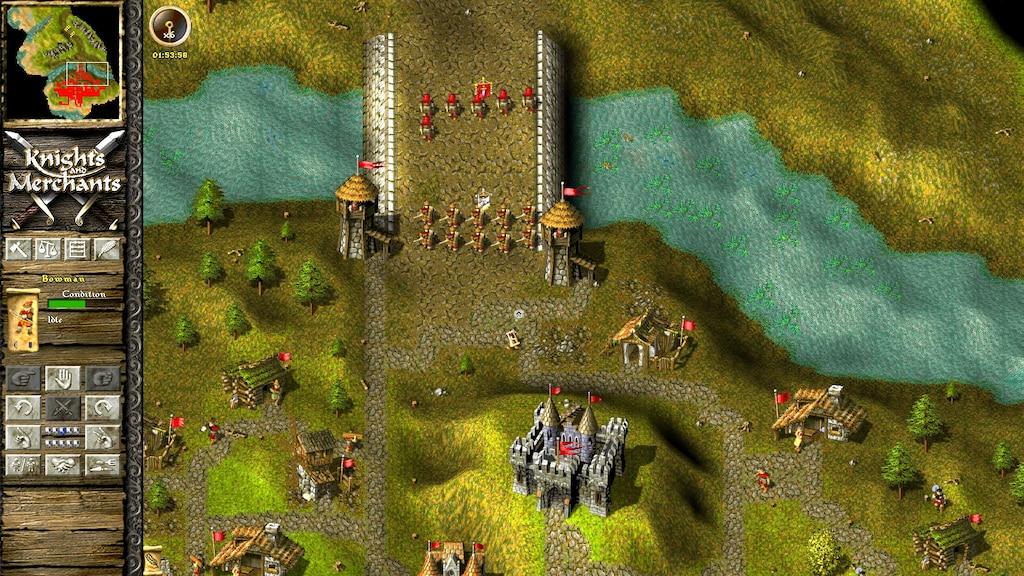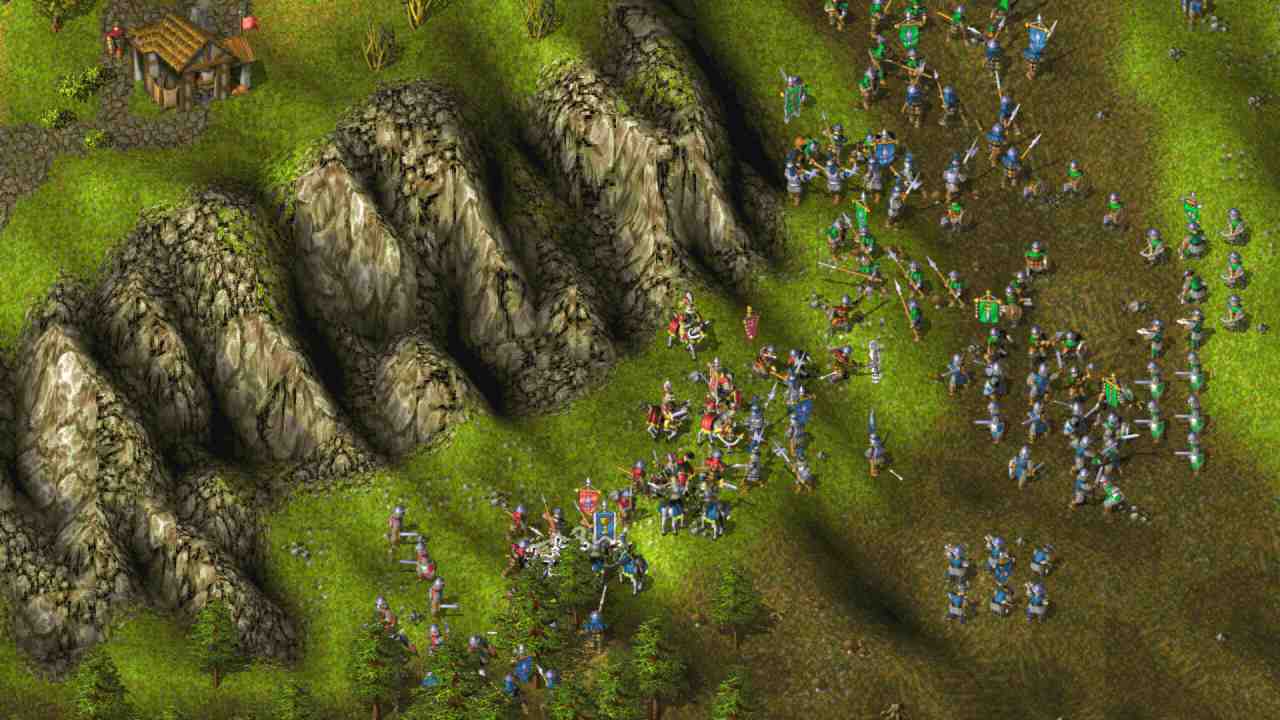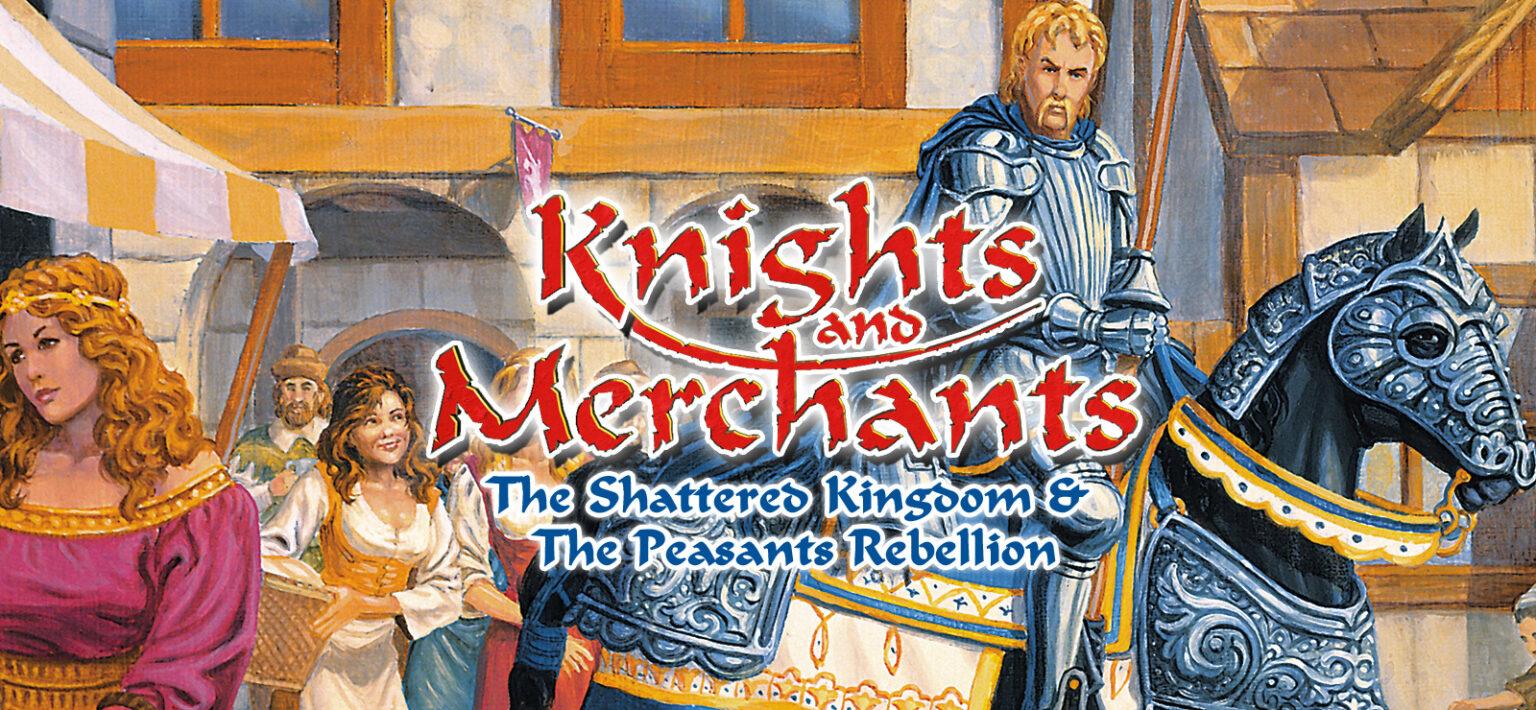Strategy games were a big part of me growing up. Together with my father, I played many of the well-known classics. Games like the Warcraft trilogy, the original StarCraft and of course the juggernaut of real-time strategy, Command & Conquer. Those games were common Sunday afternoon sessions for us. We spent hours upon hours perfecting our strategic maneuvers and battling our way through the campaigns. Once we finally beat them, we would load up a skirmish or multiplayer battle to put all our hard-learned knowledge to the test against real opponents. It brings back good memories.
A long overdue return
But aside from these juggernauts, there were also smaller, more obscure ones that left an impressive mark on me. One of them was Knights and Merchants. I don’t even recall how me and my dad ended up buying it – probably through a magazine review. What I do know is that I spent countless hours trying to beat its campaign. As you might guess, I never saw the end of it in my younger days. That’s why, when I started working on my backlog of unfinished games, this was one of the first I wanted to finally put to rest. And boy, what a challenge it turned out to be.
Disclaimer: For this article I played what most people call the Knights & Merchants Gold Edition. This edition contains the original Knights and Merchants: The Shattered Kingdom and the stand-alone expansion The Peasants Rebellion. In this compilation, many of the units and buildings from the expansion are also usable in the main campaign, along with an increased difficulty.

A Settlers-style strategy experience
Knights and Merchants is a real-time strategy game more in line with The Settlers franchise than with Warcraft. Expect lots of base management rather than pure combat. Before you can even think about building an army, you need a steady food and equipment supply chain.
Each building requires a specific type of worker, who has their own energy bar. Once that bar runs low, you must provide provisions to keep them working. Neglect them and they’ll eventually die, forcing you to train new units.
If you like building big armies, you’re in for a treat. Knights and Merchants has no population cap. But every unit needs food to survive. Build too many and your stockpiles may run dry, leaving soldiers to starve. You can create four types of combat units: axemen, archers, pikemen and horsemen. Each class has two armor variants – leather or iron, with iron being harder to produce. Combat works on a rock-paper-scissors system, so all unit types matter. I really enjoyed that aspect, as it adds a nice strategic layer. What I didn’t like, though, was the RNG hit system. Every clash between units involves dice rolls, meaning outcomes can differ even in identical battles. On missions that can take four or five hours, this quickly gets frustrating. I often found myself abusing the save/reload feature to get better results.

Combat, Missions, and the AI Struggles
Missions range from long “build your base and destroy the enemy” scenarios to smaller, limited-unit challenges. These shorter missions were a welcome change of pace. The expansion adds even more of these variations, and some really kept me on the edge of my seat. The game’s heavy focus on building a functioning economy is key to success. Every building connects to another in some way. For example, a bakery needs flour to make bread, but the flour comes from a mill, which needs wheat from a farm. This interdependence adds a deep strategic layer to base building, where placement and road planning matter.
This is also where the AI can become a pain. Every worker is an individual, and since roads only allow one character at a time, they constantly bump into each other. Because you can’t give direct movement orders, they often get stuck or block each other, especially builders working on roads. On top of that, they follow strict scripts. If you queue up roads and buildings, the AI always prioritizes roads. If you run out of materials for a building, workers will abandon it and go back to roadwork until every road is done. This can be frustrating, and while you can plan around it, I really wished for more direct control over priorities.

Presentation and Atmosphere
Gameplay holds up surprisingly well even today. The graphics, while old, are colorful and detailed. Biomes add nice variety and even include wildlife. Buildings are animated with workers moving about, each with unique sounds. Watching structures go up brick by brick is still a joy the first time you see it. The story is minimal, just enough to justify fighting your enemies, but it does the job. Mission briefings are narrated by a solid voice actor. The expansion adds animated “victory” cutscenes, but they don’t really add much to the narrative. I would have loved to see more story-driven cutscenes instead. The medieval soundtrack, however, is fantastic. With only 12 tracks, it’s not a huge playlist, but it never got on my nerves.
In the end, Knights and Merchants kept me hooked for over 50 hours. It’s been a long time since a game made me lose track of time like that. Despite its clunky moments, the gameplay is fulfilling and still holds up against modern standards. If you never played it and enjoy Settlers-style games, give it a shot. I’m confident you’ll find something to enjoy.
Knights and merchants kept me on the edge of my seat for 50+ hours. it has been a long time that a game made me loose track of time but Knights and merchants managed to do it several times. The gameplay although at times a bit clunky is still fulfilling and can still hold up between modern day standards. If you never played this game and like a settlers type of game give it a try. I’m pretty sure you will enjoy your time with it.
Pro
- Great Gameplay
- Graphics
- soundtrack
Cons
- Ai can be dumb at times
- voice acting is questionable


